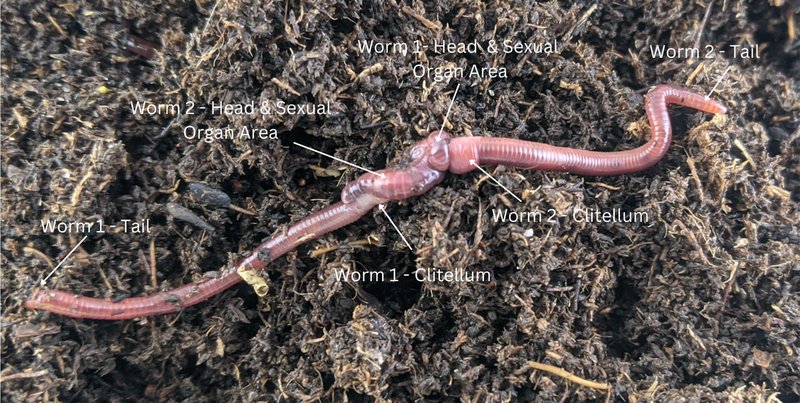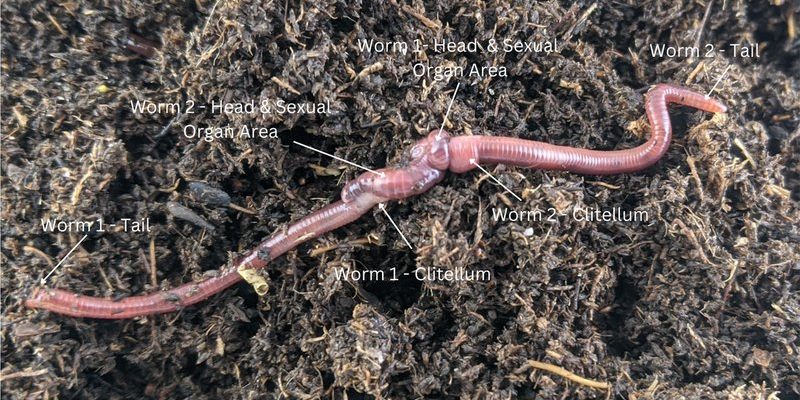
Now, you might be wondering how these unusual worms go about their reproduction. Honestly, it’s not your average love story. Instead of roses and candlelight, the mating rituals of bone-eating worms dive into the realm of the unusual. Let’s explore the intricacies of their reproduction, from mating habits to the emergence of larvae and everything in between.
How Do Bone-Eating Worms Mate?
Mating in the world of bone-eating worms is quite the spectacle. These creatures rely on a fascinating survival strategy that involves locating bones and then engaging in some unique reproductive behaviors. When conditions are just right, usually when a bone is available for consumption, males and females will find each other in these deep-sea graveyards.
Here’s the thing: bone-eating worms don’t just mate anywhere. They often gather around a shared food source—picture a dinner party where everyone’s gathered around the main dish. The males, often smaller than the females, will latch onto them or burrow into their flesh. This might sound a tad intense, but it’s crucial for reproduction. The male’s role is to fertilize the eggs as they’re released.
Reproductive Strategies
Bone-eating worms have a fascinating approach to reproduction. Their strategy can involve both sexual and asexual reproduction. While males and females mate for offspring, it’s not uncommon for females to produce eggs without a male present, a process known as parthenogenesis. This adaptability is essential for survival in the unpredictable depths of the ocean.
Did you know each female can produce thousands of eggs at once? This high frequency ensures that at least some will survive, given the many challenges the larvae face post-hatching. Just like in the wild, more offspring mean more chances of survival.
What Do Bone-Eating Worm Eggs Look Like?
When it comes to the eggs of bone-eating worms, they are quite small and don’t stand out in their ocean environment. They are typically enveloped in a gelatinous matrix, which helps protect them until they hatch. This strategy keeps them safe from predators while they develop.
The eggs are usually laid around the bone that the worms are feeding on. This positioning ensures that the newly hatched larvae have immediate access to a food source—a pretty smart move! Imagine you’re having dinner and also setting the table for your guests; it’s all about convenience.
Egg Development
As the eggs develop, they go through several stages before becoming free-swimming larvae. The process can take a few weeks, depending on environmental conditions, such as temperature and food availability. These factors significantly impact the health and survival of the larvae.
Here’s where things get interesting. The larvae are planktonic, which means they drift in the ocean currents. They need to find their way to a suitable habitat, preferably a decaying bone, where they can settle and grow into mature worms. It’s a bit like a treasure hunt for them, where each successful find can mean a new life.
Bone-Eating Worm Larvae: What Happens After Hatching?
Once the larvae hatch from their eggs, they’re like little adventurers ready to explore the vast ocean. They start off as microscopic wanderers, relying on ocean currents to carry them along. Their survival hinges on finding a bone to feed on as soon as possible.
When they encounter a bone, they undergo metamorphosis and transform into the adult form, which includes a specialized feeding apparatus. This allows them to bore into the bone, where they’ll spend most of their lives. Imagine switching from being a carefree traveler to a dedicated worker: it’s all about survival in this world!
Life Cycle and Growth
The growth phase of a bone-eating worm is quite fascinating. Once they latch onto a bone, they can live for years, growing and reproducing in the nutrient-rich environment it provides. Over time, their bodies adapt to their surroundings, becoming more specialized for life as a bone scavenger.
You might think that living off bones doesn’t sound glamorous, but for the bone-eating worm, it’s the ultimate survival strategy. They’ve carved out a niche in the ecosystem, demonstrating nature’s incredible ability to adapt and thrive in unexpected ways.
Why Understanding Bone-Eating Worm Reproduction Matters
You may wonder why we should care about the reproductive habits of these deep-sea worms. Aside from their bizarre nature and ecological role, studying them helps us understand the broader marine ecosystem. They play a critical role in nutrient cycling, breaking down organic matter and recycling nutrients back into the ocean.
Moreover, these worms have intrigued scientists who study adaptation and evolution. Their unique habits provide insights into how life can thrive even in the harshest environments. Understanding how they reproduce can help us grasp the complexities of marine biology and ecology as a whole.
Conservation and Future Research
As with many oceanic species, bone-eating worms face threats from human activity, including climate change and deep-sea mining. Protecting their habitats is essential for preserving these unique creatures and the ecosystems they support. Increased research can lead to better conservation strategies, helping to ensure that these fascinating organisms continue to thrive.
The more we learn about bone-eating worms, the clearer it becomes how interconnected life in the ocean truly is. Just as these worms rely on bones, other species depend on them in various ways. It’s a reminder of the delicate balance that exists in our oceans.
Final Thoughts on Bone-Eating Worm Reproduction
In summary, the reproduction of bone-eating worms showcases nature’s incredible creativity and adaptability. From their unique mating habits to the intricate process of egg development and larval life, every aspect of their breeding cycle is adapted for survival in the deep sea.
So, next time you think about ocean life, remember that there are fascinating stories lurking beneath the waves, waiting to be discovered. Bone-eating worms are just one example of the unique and diverse mechanisms life has developed to thrive in even the most challenging environments. When we take the time to understand these creatures, we gain invaluable insights into the wonders of our planet’s ecosystems.

